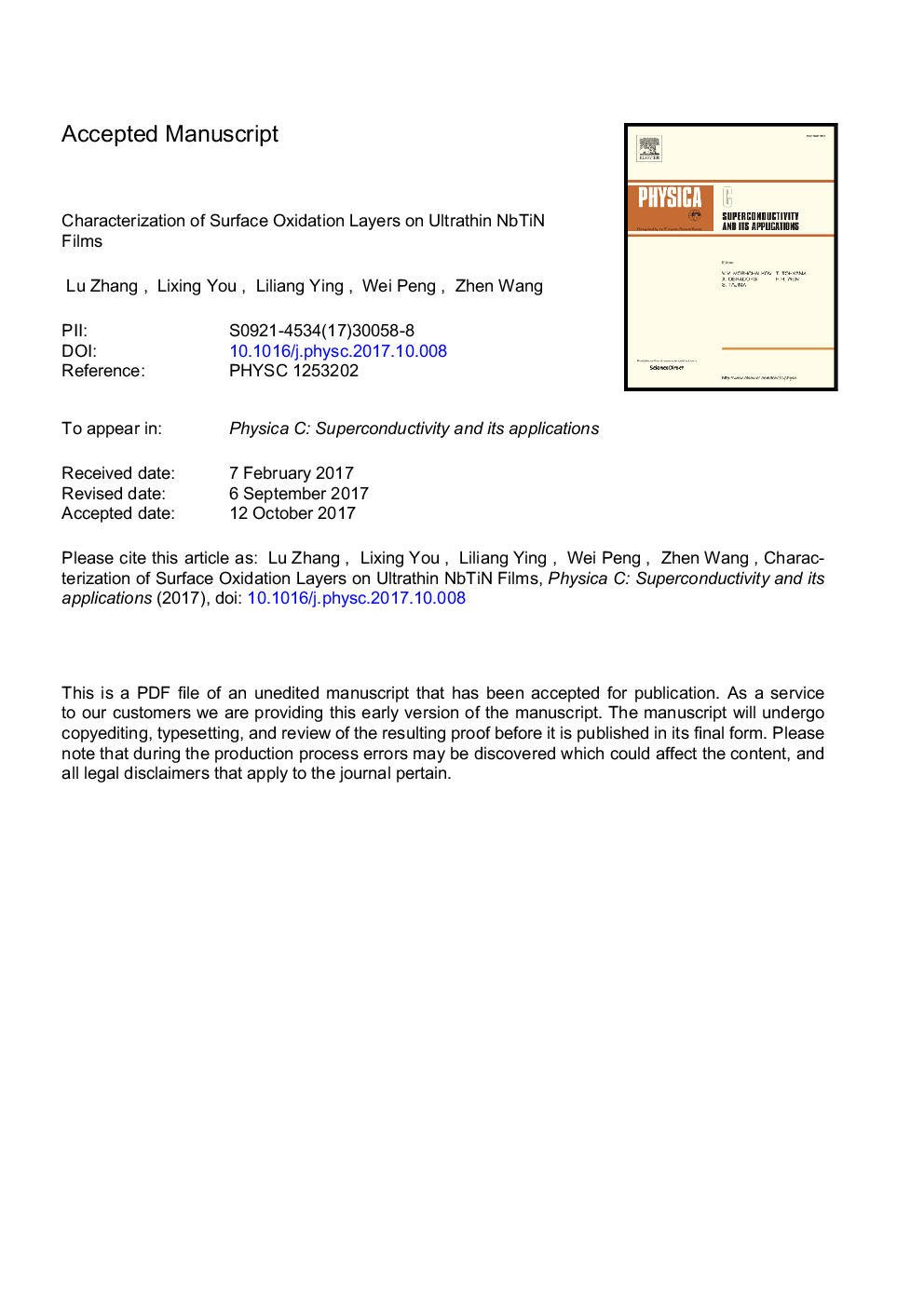| Article ID | Journal | Published Year | Pages | File Type |
|---|---|---|---|---|
| 8164155 | Physica C: Superconductivity and its Applications | 2018 | 16 Pages |
Abstract
We investigated the formation and dissolution of natural oxide layers on 4-nm ultrathin NbTiN films at room temperatures and after heat treatment. By x-ray reflection (XRR) at a low angle and adopting a tri-oxidized-layer model to fit the XRR data, the thickness of each oxidized layer and the actual NbTiN layer below was obtained. This was confirmed by scanning transmission electron microscopy and energy-dispersive x-ray spectroscopy. The x-ray photoelectron spectroscopy of the NbTiN film indicated the presence of the oxidized layers Nb2O5, TiO2, and NbO on the surface. Besides, the analysis of the films gave consistent results for the oxidized layer with saturation values of approximately 1.3â¯Â±â¯0.1â¯nm. We found that the thickness of oxidized layers remains unchanged under heat treatment of 200 °C. Our approach can help us further understand the surface properties of ultrathin NbTiN films for improving the performance of NbTiN-based devices.
Keywords
Related Topics
Physical Sciences and Engineering
Physics and Astronomy
Condensed Matter Physics
Authors
Zhang Lu, You Lixing, Ying Liliang, Peng Wei, Wang Zhen,
